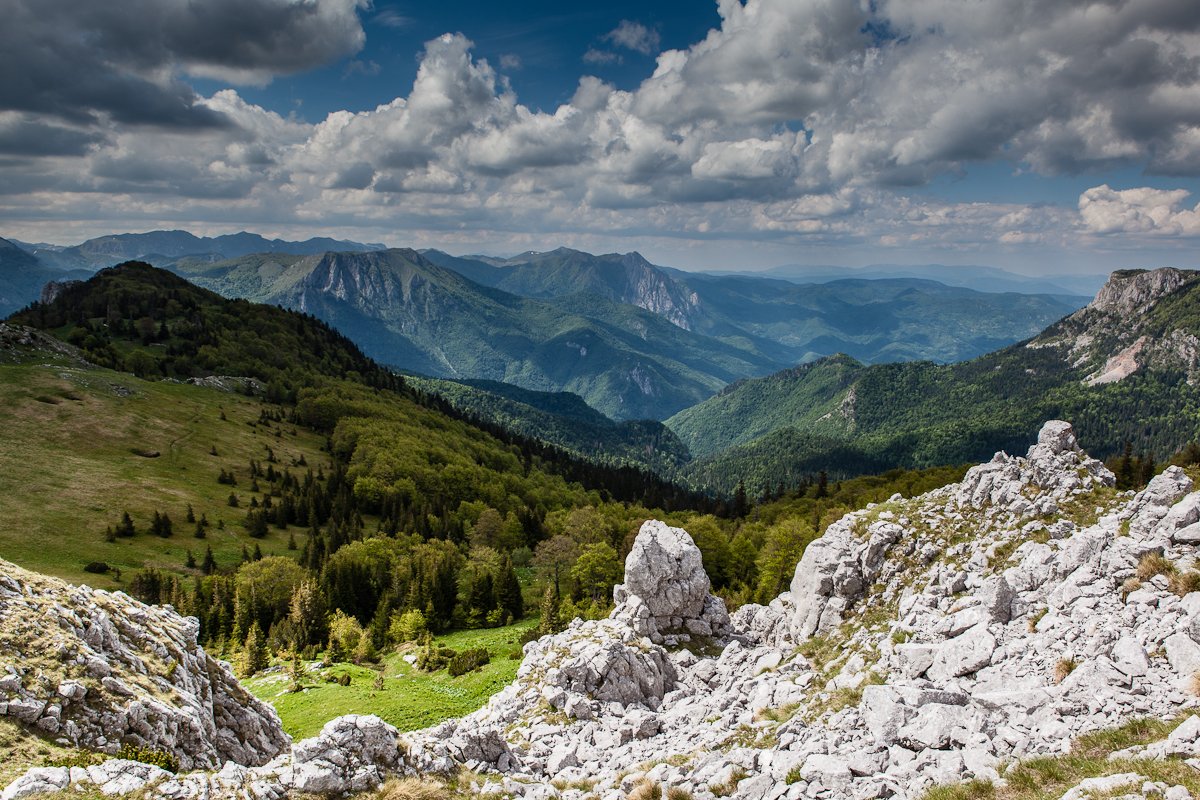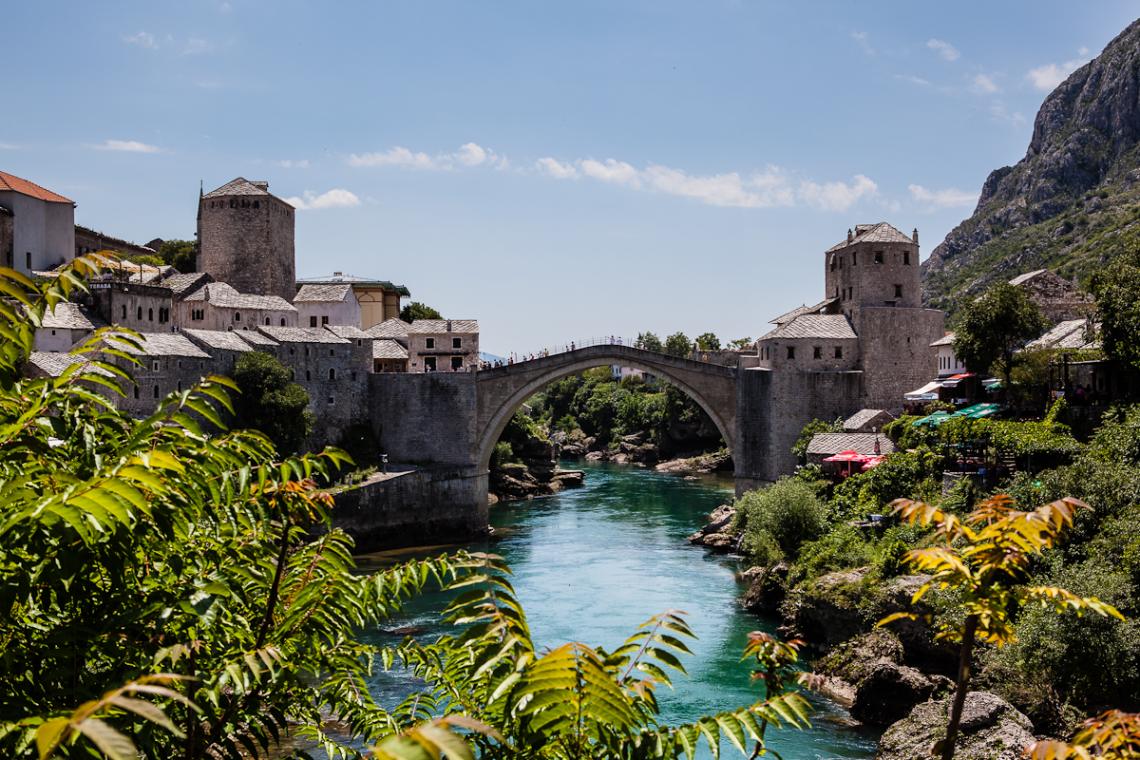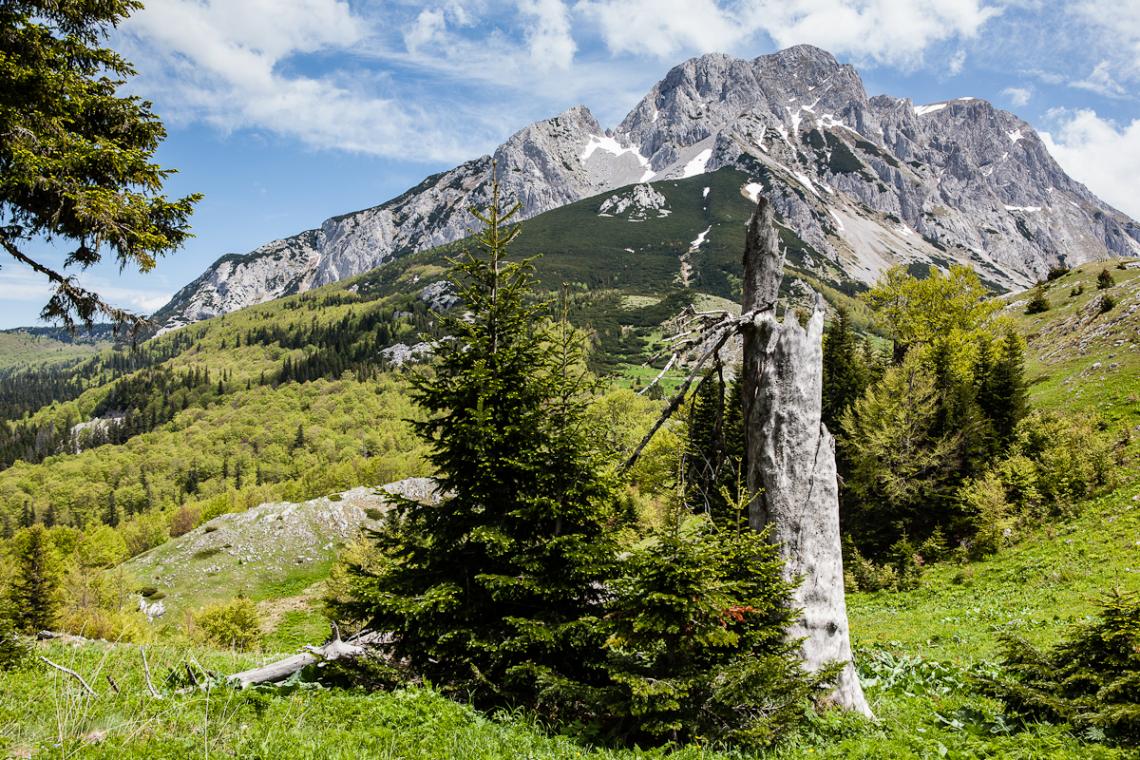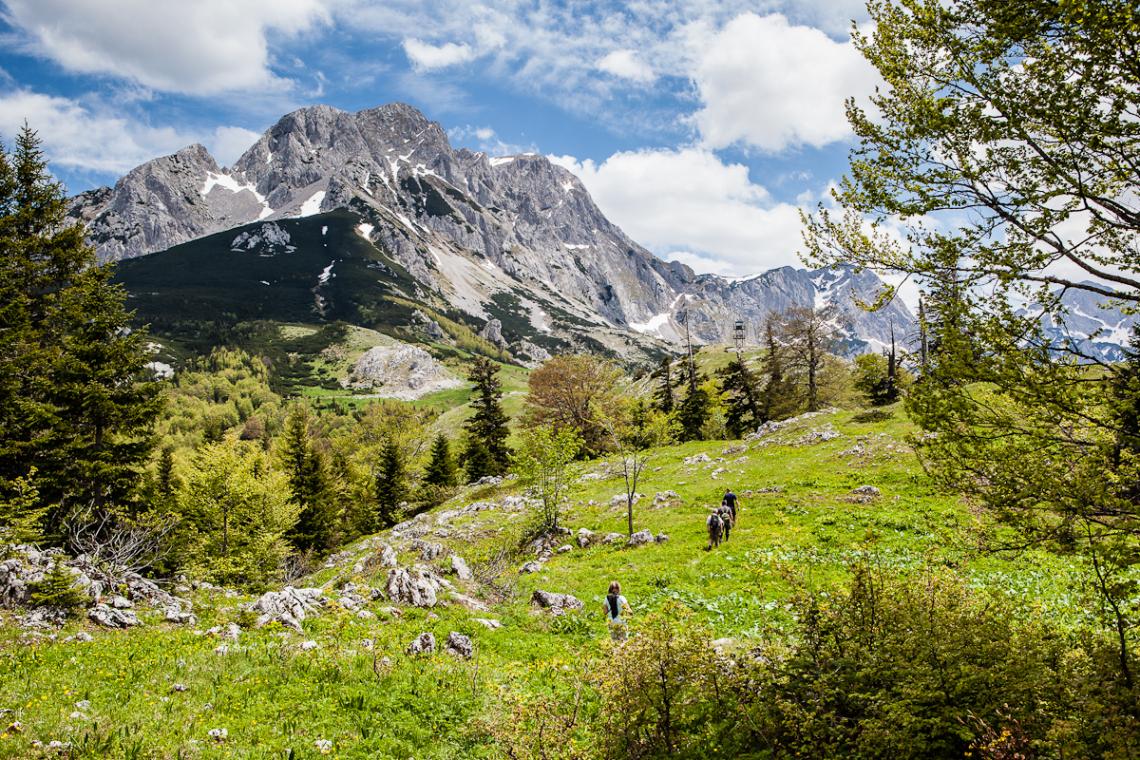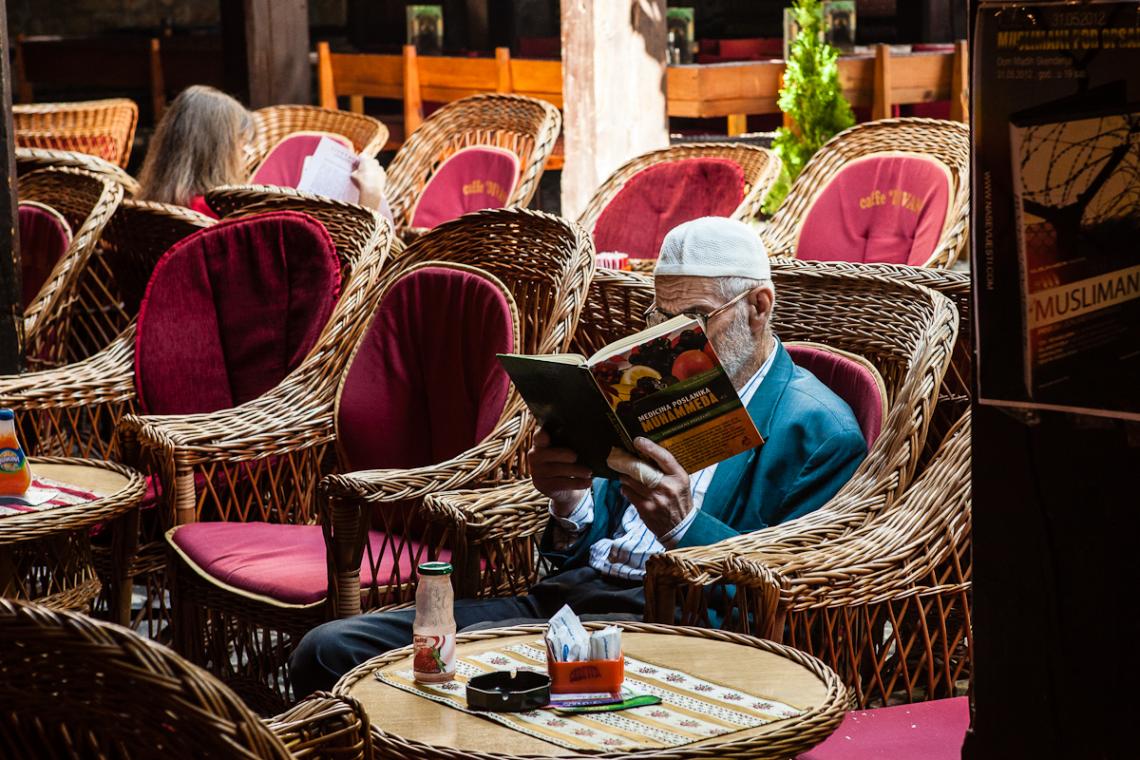Bosnia and Herzegovina – an original destination country
Bosnia and Herzegovina with its territory of 51.197 km² offers a wonderful and diverse range of landscapes. It is approximately by ¼ bigger than Switzerland, which can be reached in just a couple hours of flying time. The destination country offers a multifaceted nature full of unprecedented contrasts. The contrasts in such a small space in particular are what makes Bosnia and Herzegovina so attractive.
Only few kilometres separate the snow-covered mountains and the Adriatic Sea with its Mediterranean climate. Fertile fields border on barren karst deserts. One of the last primeval forests in Europe lies in the south, whereas in the northeast, there are the outposts of the flat and wide Pannonian plane. Abandoned villages contrast with pulsating centres of Sarajevo and Banja Luka. Both horse carriages and expensive off-road vehicles drive on country roads. Conservative manifestations of Islam and Christianity meet progressive world views.
It is in particular the nature of the sparsely populated country, which is unique in Europe. A deindustrialisation caused by the war, mass emigration and rural exodus have proven to be a blessing for the flora and fauna. A nature left to itself is taking back the abandoned landscapes. Wild horses and brown bears profit from the growing habitat, Perućica – one of the few primeval forests in Europe – gives forest scientists an insight into the ideal, original balance of a forest and its inhabitants from the animal kingdom.
The large National Park Sutjeska, with a size of 175 km2 and its core piece, the Perućica primeval forest, lies at the foot of the highest mountain in the country (Maglić, 2387 m). Thanks to its inaccessibility, the primeval forest remained free from any human influence. Hikers can enjoy magic forest scenes of pristine nature. Once they exit the dense forest, they reach the alpine plateau Prijevor at a height of 1700 m above sea level and have an impressive view of the Maglić mountain. The hiking path through the primeval forest is part of the larger hiking path network ''Via Dinarica'', which encompasses the whole Bosnia and Herzegovina.
While half of its territory is covered by forests, the country is also characterised by its numerous rivers and their karst springs. Tara, Vrbas and Neretva offer ideal conditions for rafting. The river Drina has a captivating emerald green water and an impressive canyon. A whole national park was named after the spectacular course of the river Una. Finally, Bosnia and Herzegovina was named after its longest river – the river Bosnia.
The territory of today's Bosnia and Herzegovina has been a crossroads between the East and the West for centuries. The Orient and Occident have influenced its architecture, language and culture. The oriental old town of Sarajevo, Baščaršija, and the Habsburg Latin neighbourhood offer a micro display of the whole European culture of remembrance. Global historical events, such as the outbreak of World War I, the Winter Olympic Games in 1084 as well as the bloody break-up of Yugoslavia have happened in the capital of the country. There is thus a sufficient historic and cultural heritage for a 2- or 3-day visit to Sarajevo.
Given its numerous accommodation options, the airport and its central location, Sarajevo is at the same time an ideal point of departure for excursions. Lukomir, the highest traditional mountain village in the country, the Olympic mountains Bjelašnica and Jahorina, the wide and barren Romanija as well as the health resort Ilidža can be easily reached by a bus or car. Thanks to the cableway, which was reintroduced in spring 2018, in less than ten minutes, one can comfortably go from the centre of Sarajevo to the local mountain Trebević, which disposes of a vast hiking path network.
The Old Bridge in Mostar can also be reached from Sarajevo after a two-hour drive. It is particularly advisable to take the train through the canyon of the river Neretva, which is a particularly popular route for railway fans.
Banja Luka – the second largest city of the country and the secret party capital – attracts especially young tourists. The student charm of the city with 200,000 inhabitants and its numerous concerts and festivals attracts thousands of visitors during the summer months.
A secret tip and probably the most valuable jewel of the country is the National Park Una in the northwest of the country, with a size of 19'800 ha. The numerous rapids and waterfalls of the Una river are a match for the near Croatian Plitvice lakes in any respect – the only difference is the fact that there are less tourists in the National Park Una, so that it is less commercial.
Bosnia and Herzegovina offers the perfect conditions for roundtrips of several days and thematic focuses on: nature and adventure, history and culture. As a destination country, it is an attractive combination of originally rural and urban tourist destinations – it is ideal for small group trips and its range of sights, topics and activities goes from European Islam to outdoor sport.
The article was written by Jörg Heeskens, author of the guidebook "Bosnia and Herzegovina on the Hand" and published in TRAVEL INSIDE.
Jörg Heeskens will also present the tourism potential of Bosnia and Herzegovina at the Swiss Travel Day, 25th October 2018 in Zurich. More information will follow soon!

